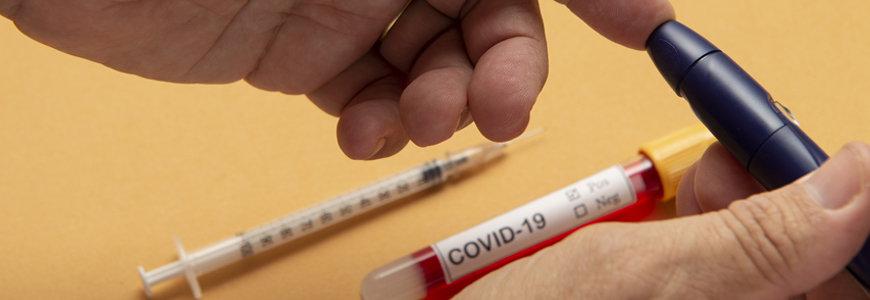Higher-than-normal blood sugar levels represent a significant risk factor for patients with diabetes mellitus if they are exposed to COVID-19, a Duke endocrinologist warns.
Patients with lower pre-infection A1c levels who contracted the virus experienced better outcomes, according to recent clinical research. But an equally important factor in prevention, diabetes specialists say, is ensuring that patients maintain regular contact with providers.
“My assessment of the current research literature is that blood sugar can be a significant factor in disease management for patients with diabetes who are admitted for COVID-19,” says Jennifer V. Rowell, MD, a Duke endocrinologist who treats patients with diabetes. “We certainly need better studies and more research, but it seems clear that we should encourage patients with diabetes to be more vigilant than ever about maintenance of controlled blood glucose levels.”
COVID-19 risks present challenges for patients with diabetes because of the comorbidities common to the patient group, including hypertension, obesity, and cardiovascular disease, which can complicate disease management if the patients are infected with COVID-19, Rowell says.
“We do hear from patients coming to our outpatient clinics who say they are worried about exposure and are reluctant to come in, even though the current data do not suggest patients are at higher risk of contracting the virus compared to persons without diabetes,” she adds.
Patients with uncontrolled diabetes have a higher risk of complications following infection. As a result of those risks, Rowell encourages patients to work with a physician to prepare a personalized plan to manage diabetes and risk factors.
Treatment risks and priorities identified in recent research
Among the treatment risks and priorities identified in recent research:
- Patients with type 1 diabetes mellitus (T1DM) with higher A1c levels are at higher risk for developing complications after COVID-19 infection.
- Patients with T1DM are at higher risk for severe diabetic ketoacidosis.
- Patients with type 2 diabetes mellitus (T2DM) with fatty liver are at higher risk for a cytokine storm associated with COVID-19 infection.
- Patients who are obese and have either T1DM or T2DM are at higher risk of respiratory failure and the need for ventilator use.
- Patients with both obesity and diabetes may present with altered adapted immune response and chronic low-grade inflammation.
Rowell says these risks can be mitigated to some extent with improved glycemic control and risk factor reduction with the continued involvement of physicians, especially through telehealth visits, which are demonstrating benefits for patients with diabetes.
“A telehealth visit can be effective by ensuring that patients have enough refills and medication supplies,” she adds. “Try to get patients blood sugar levels at goal. Communicate the need to come to the clinic for physical exams for such conditions as foot ulcers.”
Consistent contact with caregivers is particularly important for patients who require close monitoring. Providers should monitor a patient’s blood sugar level immediately upon presentation if COVID-19 is a possible diagnosis. “Management of these patients can be complex because of the comorbidities associated with diabetes,” Rowell says.
Many patients are taking the COVID-19 threat seriously and are motivated to take on a self-care approach, she adds: “That’s a helpful development, and it may improve our outcomes.”
